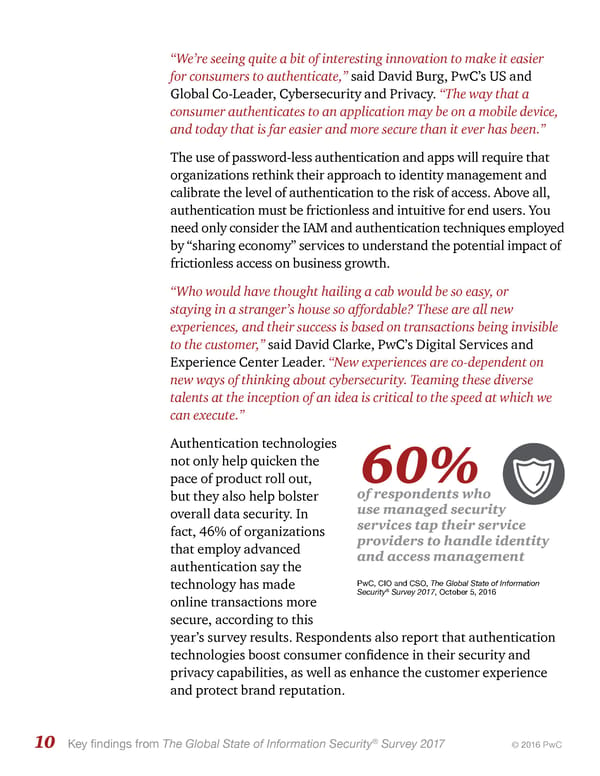“We’re seeing quite a bit of interesting innovation to make it easier for consumers to authenticate,” said David Burg, PwC’s US and Global Co-Leader, Cybersecurity and Privacy. “The way that a consumer authenticates to an application may be on a mobile device, and today that is far easier and more secure than it ever has been .” The use of password-less authentication and apps will require that organizations rethink their approach to identity management and calibrate the level of authentication to the risk of access. Above all, authentication must be frictionless and intuitive for end users. You need only consider the IAM and authentication techniques employed by “sharing economy” services to understand the potential impact of frictionless access on business growth. “Who would have thought hailing a cab would be so easy, or staying in a stranger’s house so affordable? These are all new experiences, and their success is based on transactions being invisible to the customer,” said David Clarke, PwC’s Digital Services and Experience Center Leader. “New experiences are co-dependent on new ways of thinking about cybersecurity . Teaming these diverse talents at the inception of an idea is critical to the speed at which we can execute.” Authentication technologies not only help quicken the 60% pace of product roll out, but they also help bolster of respondents who overall data security. In use managed security fact, 46% of organizations services tap their service that employ advanced providers to handle identity authentication say the and access management technology has made PwC, CIO and CSO, The Global State of Information ® online transactions more Security Survey 2017, October 5, 2016 secure, according to this year’s survey results. Respondents also report that authentication technologies boost consumer confidence in their security and privacy capabilities, as well as enhance the customer experience and protect brand reputation. 10 Key findings from The Global State of Information Security® Survey 2017 © 2016 PwC
 Toward new possibilities in threat management Page 10 Page 12
Toward new possibilities in threat management Page 10 Page 12